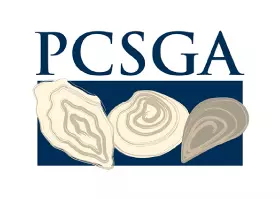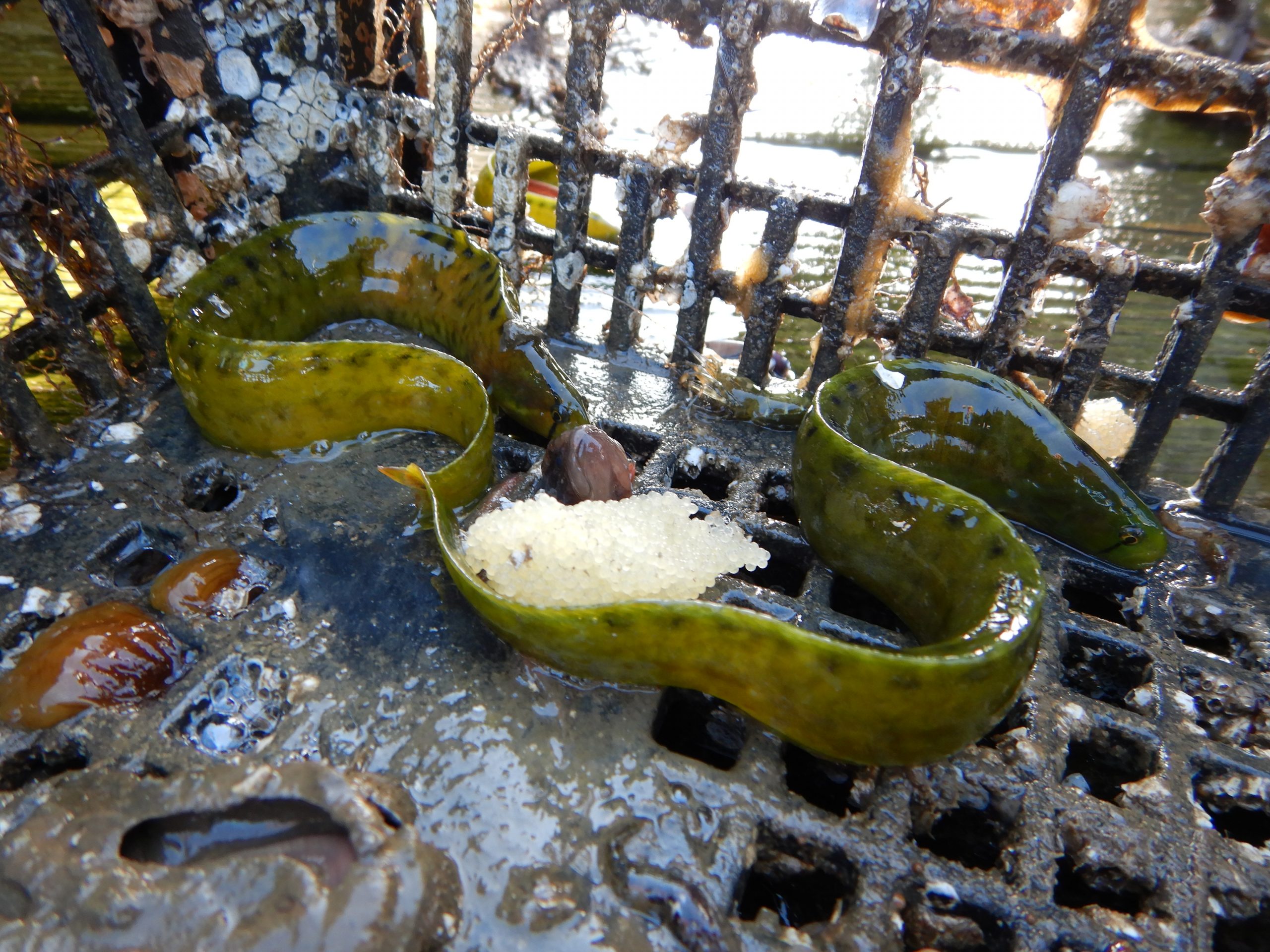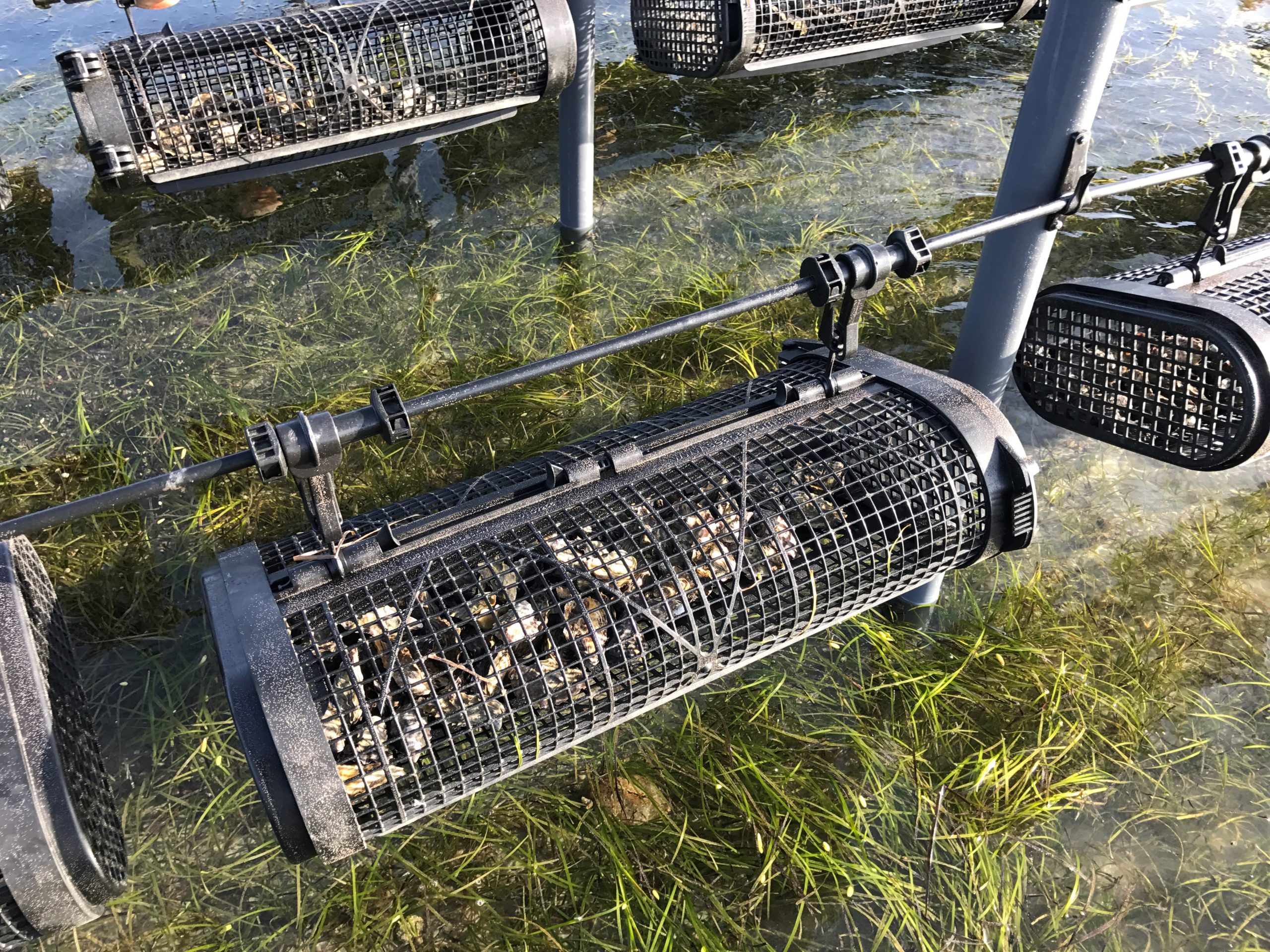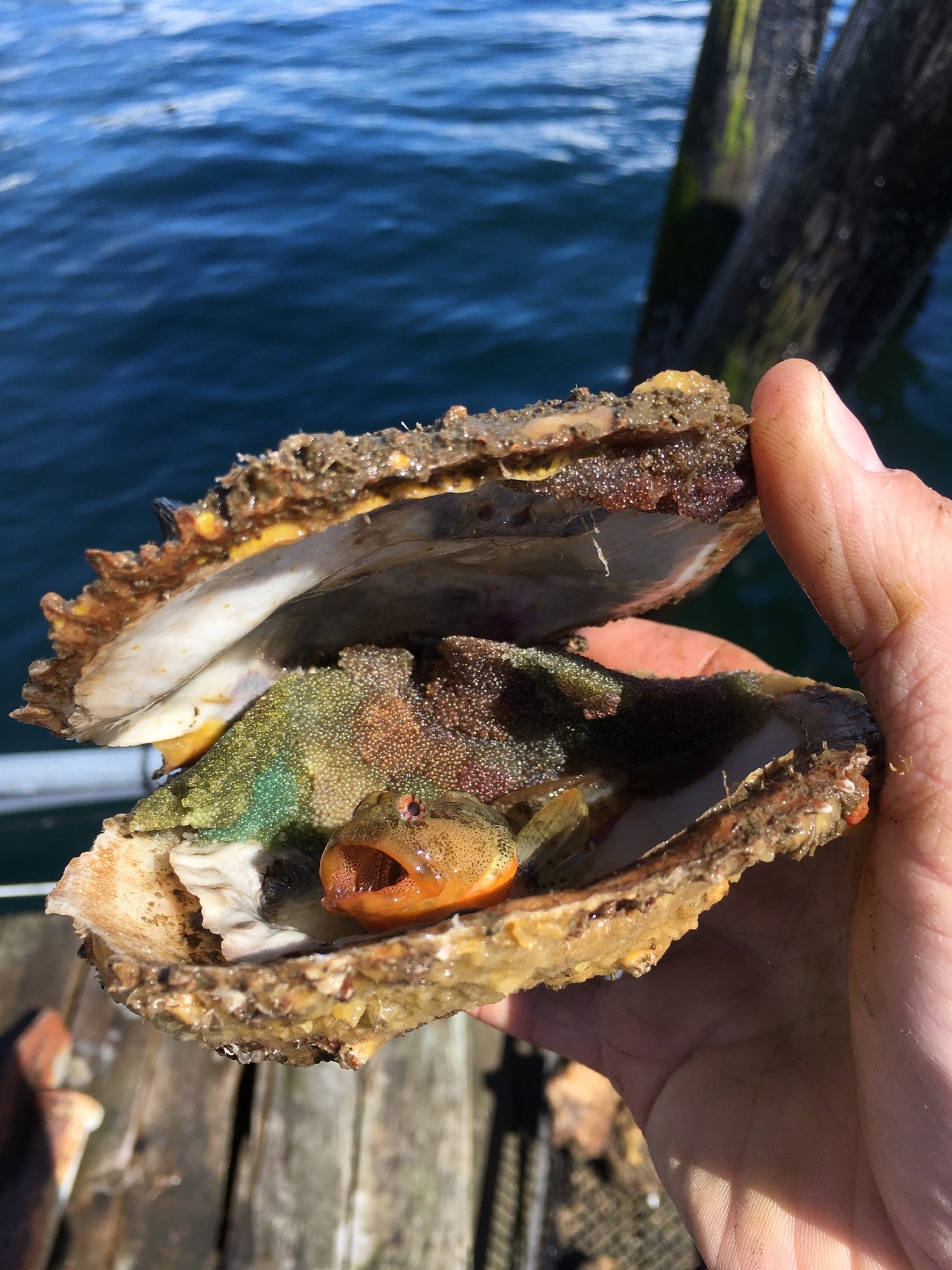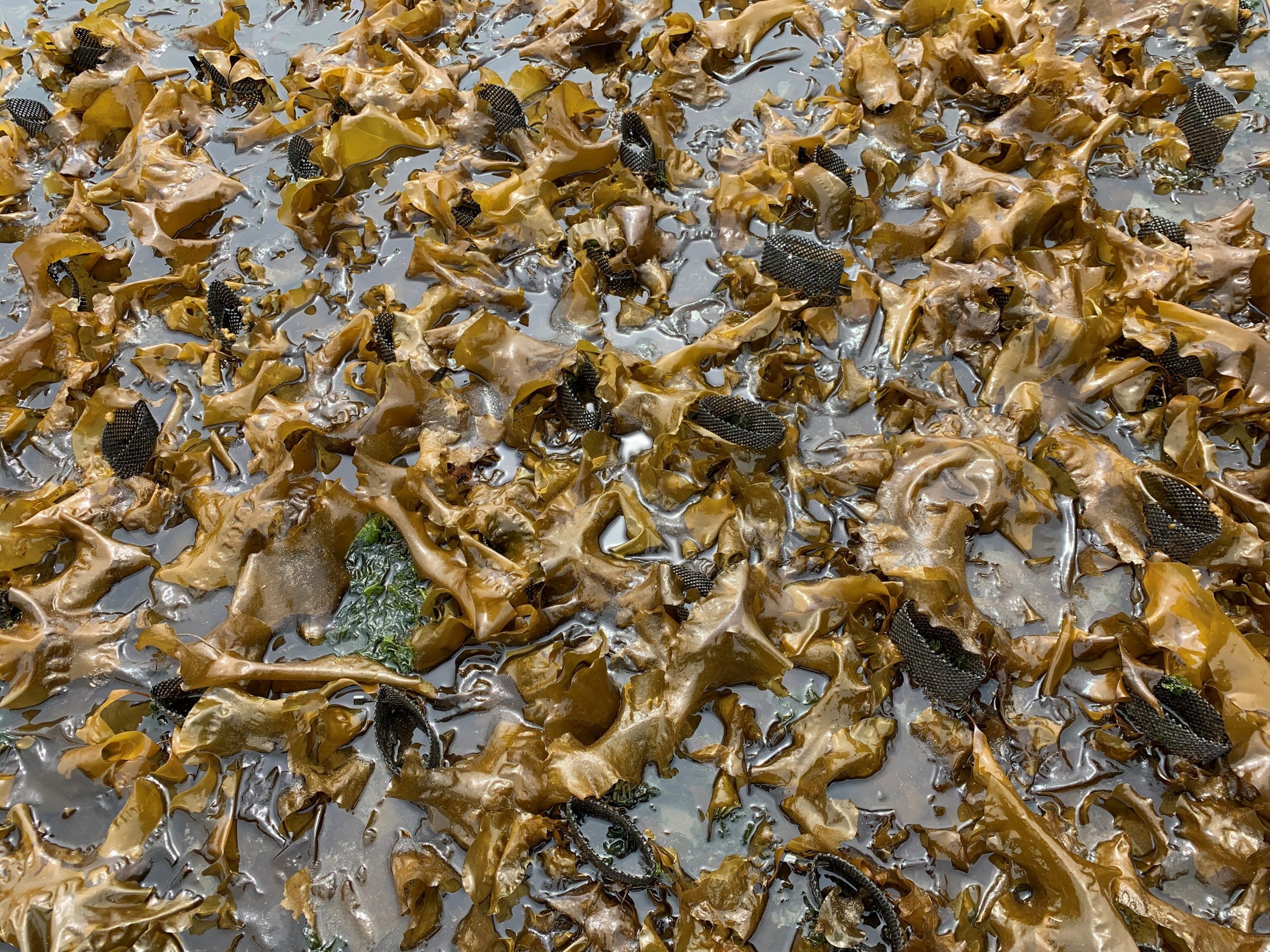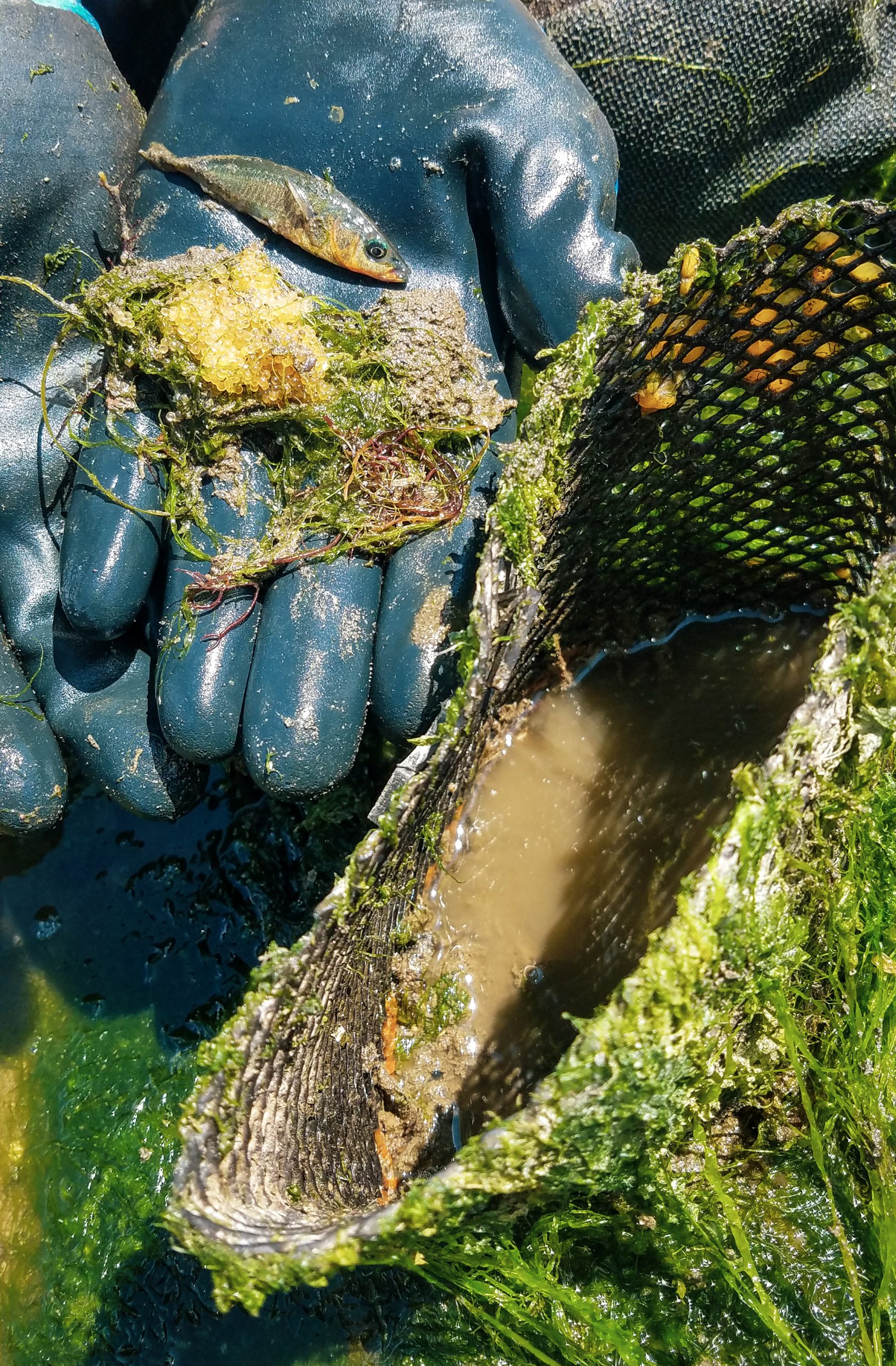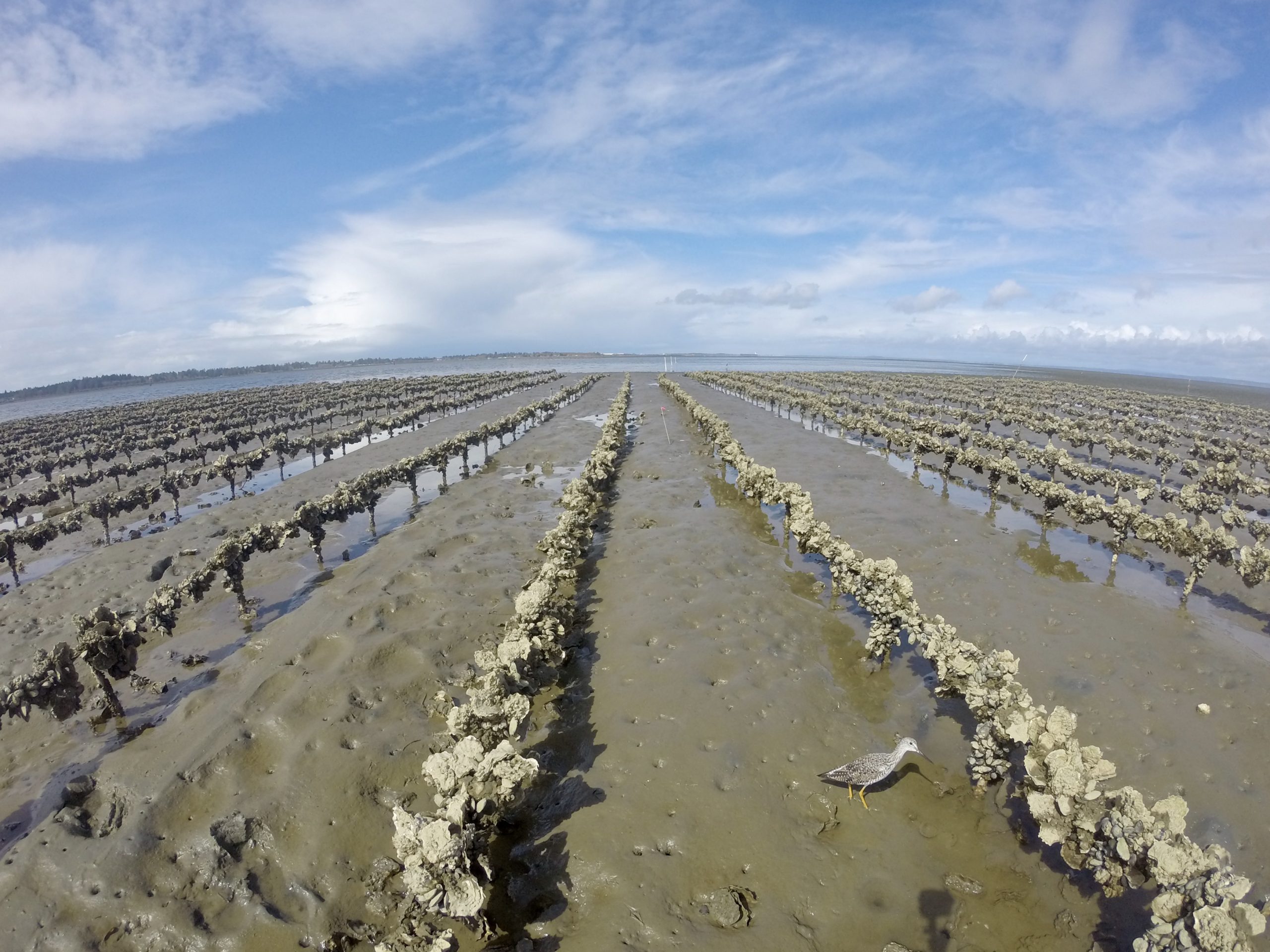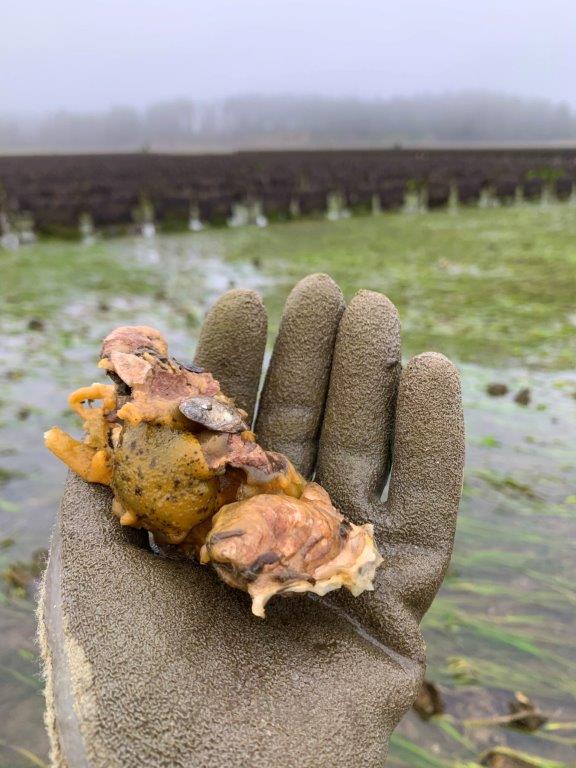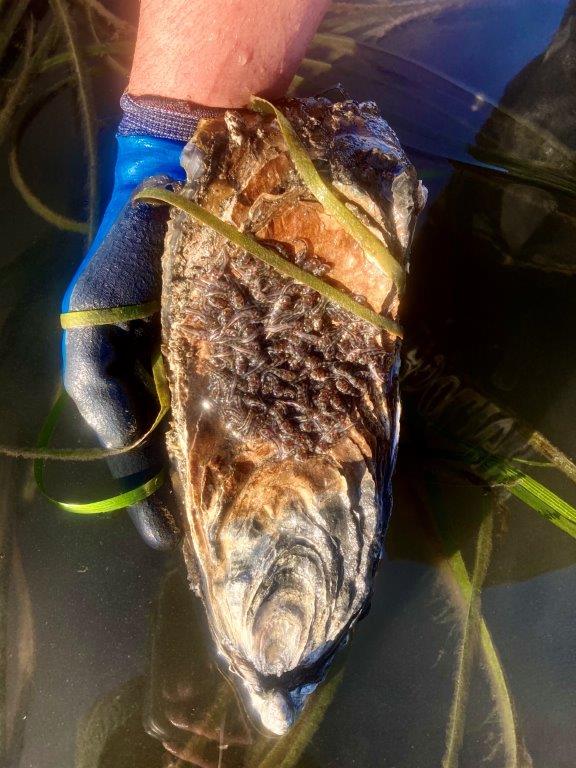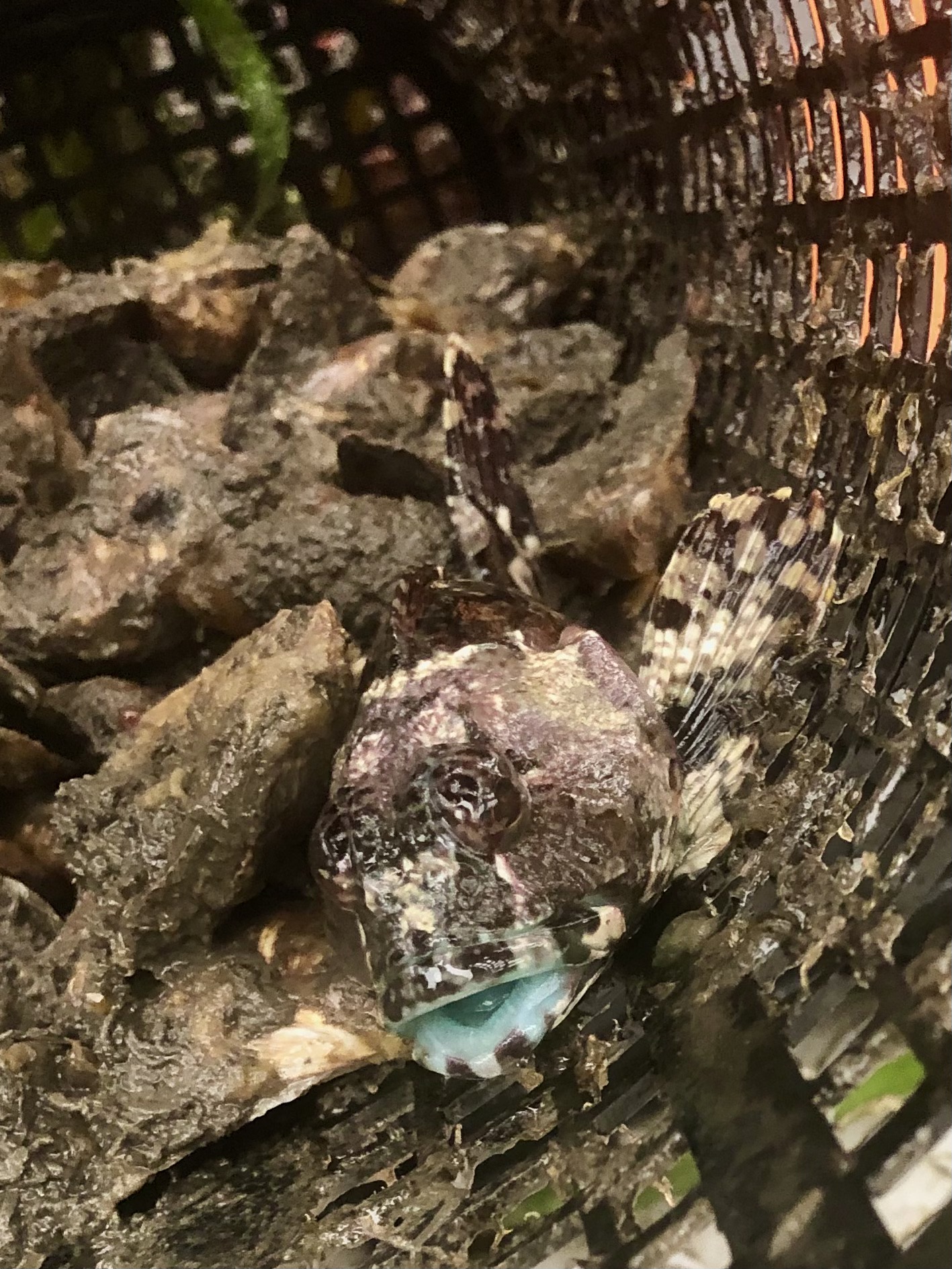Feb Winner Katie Houle
Brilliant green penpoint gunnels guard their eggs in our trays growing rock scallops in Sequim Bay. Gunnels are one of the many colorful species that find these trays a safe haven for feeding and breeding!
Apr Winner Sergio Guevara
The picture shows the happy coexistence of the oyster growing gear with Eelgrass (Zostera marina) bed. Eelgrass is the nursery ground for many aquatic species. Eelgrass gets the benefit of the oyster excrete that act as a fertilizer for the plant.
May Winner Jeremy Esposito
Although stock checks of scallop broodstock lead to reports of mortality, we tend to get a kick out of the new residents. Pictured here is a purple-hinged rock scallop repurposed. Looks to me like a sculpin (?), nesting below Manchester’s NMFS Sablefish pens.
June Winner Nyle Taylor
This weekend’s extreme low tides exposed ground that does not often go dry. Prior to planting geoduck, this bed was bare sand. The addition of the mesh tubes provided structure for the kelp forest that is to the north of the farm to expand covering nearly a half-acre of our mesh tubes. Kelp provides many ecosystem services, from carbon sequestration to habitat for a variety of native Puget Sound species.
July Winner Marc Dewey
While cleaning out geoduck nursery tubes we often find mussels, cockles, barnacles and juvenile crab. Today we discovered that stickleback fish have been creating egg nests under seaweed within the protective environment of the tubes.
Aug Winner Fiona Boardman
Lesser Yellowlegs are just one of the many shorebird species that utilize oyster aquaculture habitat to forage during their migrations. The birds use their long bills to capture small invertebrates from the mud. This photo was taken at Brady's Oysters in Grays Harbor, where I am studying the foraging behavior of shorebirds in and out of oyster aquaculture.
Sept Winner Fiona Boardman
This Sea Lemon dorid nudibranch was found munching on sponge in the baskets we are using to monitor oyster growth. We saw sponge growing on several of our oysters, like the ones pictured. It’s always fun to see ways that the introduced Pacific Oyster supports native species.
NOVEMBER – MARK SEYMOUR
Plainfin Midshipman juveniles yet to leave their nest atop a 20 plus year old Pacific growing within eelgrass.
